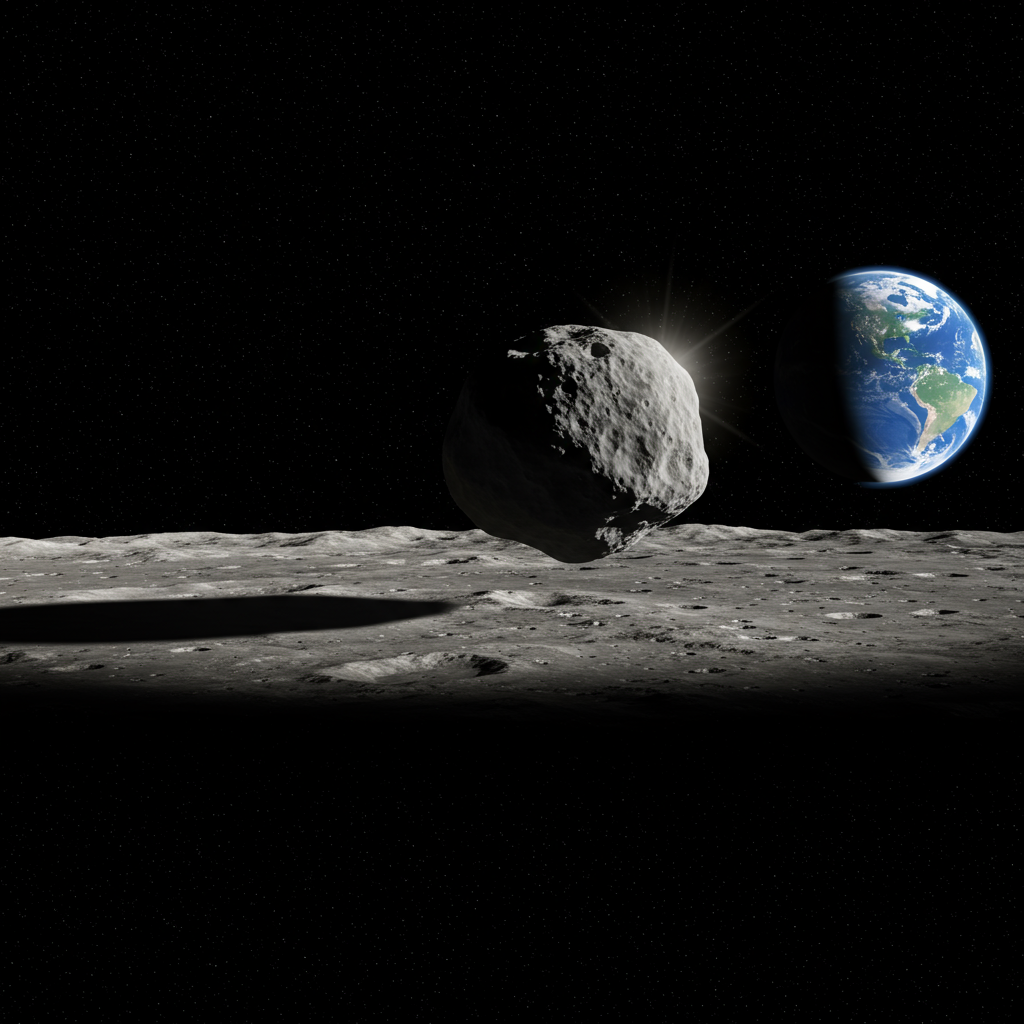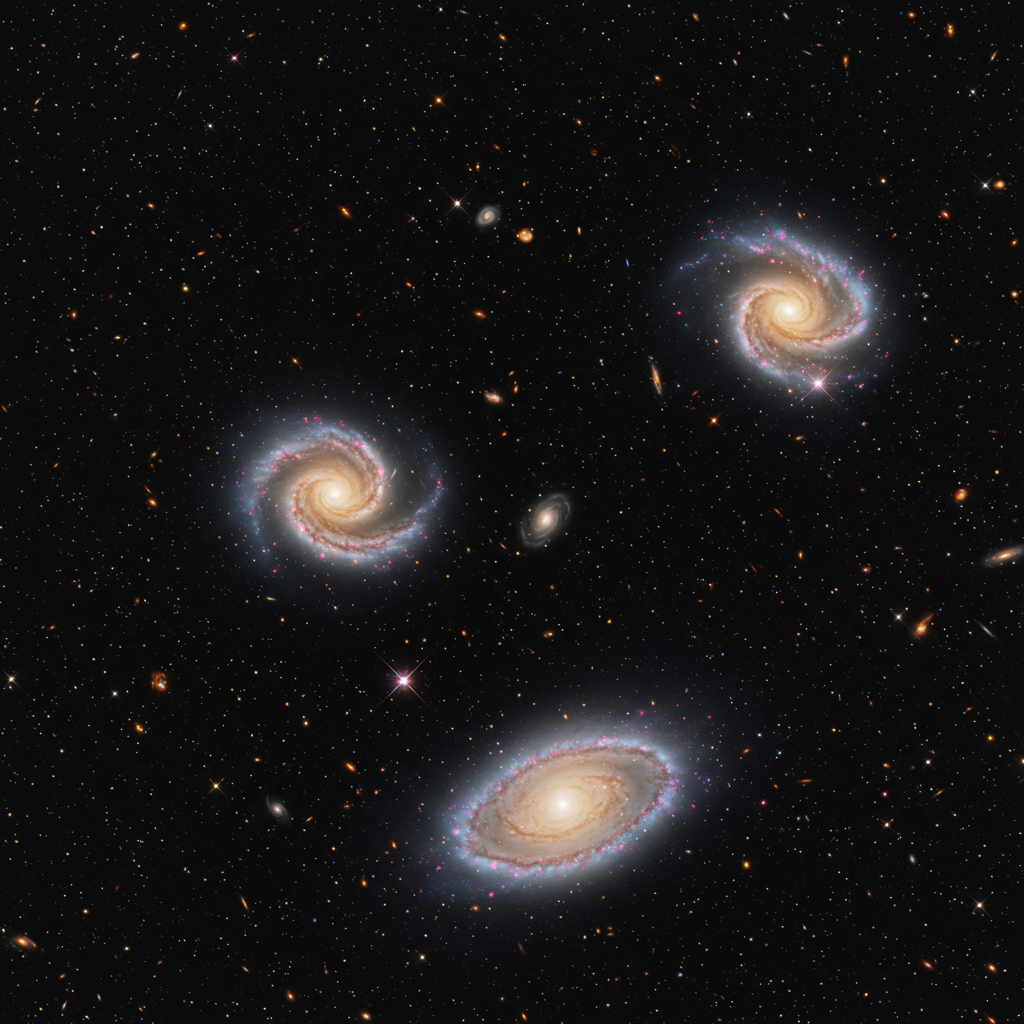From Earth Threat to Lunar Target: The Story of Asteroid 2024 YR4
Just months after it was first spotted, asteroid 2024 YR4 captured international attention. Discovered on December 27, 2024, by the ATLAS telescope in Chile, this space rock quickly jumped to the highest ranking on the Torino Impact Hazard Scale due to initial calculations suggesting a potential, albeit low, threat to Earth in 2032.
However, the story of 2024 YR4 has evolved significantly as scientists gather more data. While the risk to our planet has been effectively ruled out thanks to refined orbital analysis, astronomers are now focusing on a different potential impact destination: the Moon.
The Shifting Odds: Why the Moon Risk Increased
Early ground-based observations in February 2025 dramatically reduced the estimated risk of 2024 YR4 hitting Earth, downgrading it to a 0 on the Torino scale. This is common for newly discovered asteroids as trajectories are refined. Yet, these same observations hinted at a slim chance of a lunar collision.
The true breakthrough in understanding 2024 YR4’s path came from space. NASA’s powerful James Webb Space Telescope (JWST) turned its sensitive instruments towards the asteroid, providing crucial new data. JWST captured images in March 2025 and conducted further observations in May 2025.
By leveraging Webb’s precision, particularly its Near-Infrared Camera, scientists at NASA’s Center for Near-Earth Object Studies (CNEOS) and other institutions have been able to significantly refine the asteroid’s orbital path. This improved understanding has led to an increase in the calculated probability of 2024 YR4 colliding with the Moon on December 22, 2032. The odds rose from approximately 1.7% in February to 3.8% after the March Webb data, and then to the current figure of 4.3% following the May observations and subsequent analysis updated around early June 2025.
Still Highly Unlikely to Hit
Despite the increase, it’s crucial to remember that a 4.3% chance means there is still a more than 95% probability that asteroid 2024 YR4 will miss the Moon in 2032. If it does, it will simply pass by as a fascinating celestial object for telescopes to track.
What We Know About Asteroid 2024 YR4
Thanks to the detailed observations by the James Webb Space Telescope, scientists have also gained insights into the asteroid itself.
Size: 2024 YR4 is estimated to be roughly the size of a 10 to 15-story building, with estimates ranging from approximately 65 meters (200 feet) up to 130-300 feet wide. It’s notable as the smallest object targeted by Webb for detailed study to date.
Composition: Data suggests it likely has a stony composition. Researchers also speculate its surface may be covered by rocks that are fist-sized or larger. It’s believed to have an elongated shape.
If 2024 YR4 had remained a threat to Earth, an object of this size was informally classified as a ‘city-killer’ – capable of causing widespread destruction locally through a powerful airburst.
Impact on the Moon: A Detectable Event
Should 2024 YR4 defy the odds and impact the Moon on December 22, 2032, it would be traveling at a high speed, estimated near 13 kilometers per second (over 46,000 km/h). Because the Moon lacks an atmosphere, the asteroid would hit the surface at full force, unlike an object potentially breaking up in Earth’s atmosphere.
NASA has confirmed that an impact from an asteroid of this size would not alter the Moon’s orbit around Earth. The Moon is already heavily scarred by countless impacts over billions of years. However, such a collision would certainly create a new, potentially visible crater on the lunar surface, which could then be located and studied by orbiting spacecraft like NASA’s Lunar Reconnaissance Orbiter (LRO). If the impact occurred on the Moon’s dark side, it might even be noticeable from Earth.
Watching and Waiting: The Path Ahead
Currently, asteroid 2024 YR4 has moved in its orbit around the Sun and is out of view, even for the powerful James Webb Space Telescope. Ground-based telescopes were able to track it until April 2025. It is not expected to become easily observable again until 2028, when it will pass significantly farther away from Earth than the Moon.
Scientists are actively reviewing historical astronomical data to see if 2024 YR4 might have been inadvertently captured in past observations, which could help further refine its orbit prediction. When it does return to view in 2028, new observations will be critical to narrow down its trajectory even more and provide a clearer picture of whether it will make a historic impact on the Moon or simply pass by.
The diligent tracking and re-evaluation of asteroids like 2024 YR4 serve as valuable real-world exercises for planetary defense efforts, helping scientists and space agencies refine their processes for detecting, tracking, and assessing potential threats from near-Earth objects.




